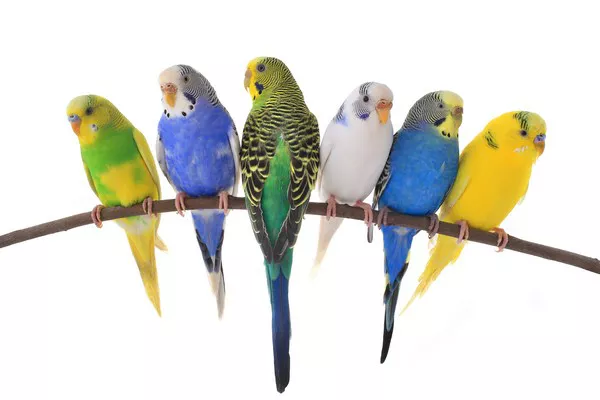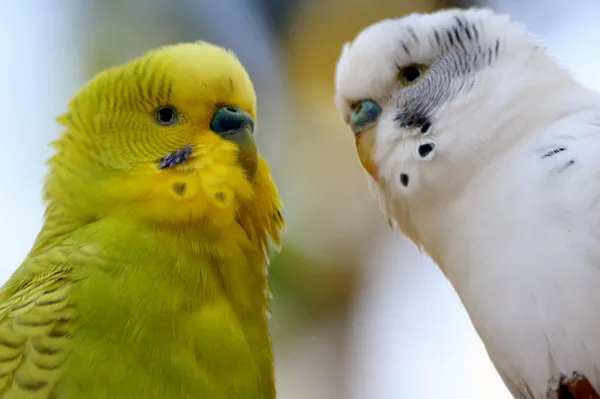Corn snakes (Pantherophis guttatus) are one of the most popular pet snake species due to their calm nature, beautiful coloration, and ease of care. They are non-venomous and relatively low-maintenance compared to other reptiles. However, providing a suitable environment for your corn snake is crucial to ensure it stays healthy and thrives. In this article, we will go over everything you need to know about what to put in a corn snake tank to create the perfect habitat.
1. Choosing the Right Tank for Your Corn Snake
The first step in setting up a corn snake habitat is selecting the appropriate tank size. Corn snakes can grow between 3 and 5 feet long, so it’s essential to give them enough space to move around comfortably. A tank that is too small can cause stress, limit your snake’s activity, and even affect its health.
Size: For a single adult corn snake, a 20-gallon tank (approximately 30 inches long, 12 inches wide, and 12 inches high) is the minimum size recommended. However, a larger tank, such as a 40-gallon tank (36 inches long, 18 inches wide, and 18 inches high), would be more suitable. For hatchlings, a smaller tank may be fine temporarily, but they will outgrow it quickly.
Type of Tank: Glass aquariums with a secure lid are commonly used for snakes, but you can also use plastic or acrylic enclosures. These materials are transparent, making it easy to observe your pet, and the tight-fitting lids help prevent escape.
Ventilation: Proper airflow is essential for maintaining healthy humidity and temperature levels. Ensure that the tank has ventilation holes or mesh lids to allow air circulation. However, it should not be overly ventilated as this can lead to excessive humidity loss.
2. Substrate: What Should Your Corn Snake Live On?
The substrate, or bedding, is the material at the bottom of the tank, and it plays an important role in providing a comfortable environment for your snake. Corn snakes are burrowers by nature, so they appreciate a substrate that they can dig into. There are several types of substrate you can use, and each has its benefits.
Best Substrates for Corn Snakes:
Aspen Shavings: Aspen shavings are one of the most popular substrates for corn snakes. They are absorbent, provide a good burrowing medium, and are safe for snakes. Make sure to avoid cedar or pine shavings, as the oils in these woods can be toxic to reptiles.
Coconut Husk (Coco Coir): Coco coir is a natural fiber derived from the husk of coconuts. It is an excellent substrate because it retains moisture well, which helps maintain humidity levels in the tank. It’s also safe for snakes and can be easily spot-cleaned.
Reptile Carpet: Reptile carpets are a washable option that is easy to clean and maintain. However, some snakes may find it harder to burrow in this type of substrate, so it may not be the best option for corn snakes that like to dig.
Paper Towels or Newspaper: For easy cleanup, paper towels or newspaper can be used as a substrate, especially for young corn snakes or those in quarantine. However, they don’t allow for burrowing and may not provide the most natural environment.
Regardless of the substrate you choose, it is important to spot clean the tank regularly to remove any waste. Every few weeks, you should do a full substrate change to ensure a clean and fresh environment for your corn snake.
3. Temperature and Heat Sources
Corn snakes are native to the southeastern United States, where they experience warm climates. As such, they require a warm environment to thrive in captivity. Maintaining the proper temperature gradient in the tank is key to your snake’s health. The tank should have a warm side and a cooler side to allow your corn snake to regulate its body temperature.
Hot Spot: The warm side of the tank should have a temperature of around 85 to 90°F (29 to 32°C). This is where your corn snake will go to bask and digest food. You can achieve this temperature using a heat lamp or heat mat. A heat lamp placed above the tank or a heat mat placed underneath the tank can provide the necessary warmth. Make sure that the heat source is not too hot, as it can cause burns to your snake.
Cool Side: The cooler side of the tank should be kept around 75 to 80°F (24 to 27°C). This allows your corn snake to regulate its body temperature by moving between the warmer and cooler areas of the tank. If your home is cool, you might need to use a space heater or ceramic heat emitter to maintain this temperature.
Night Temperature: At night, the temperature can drop slightly but should not go below 65°F (18°C). Temperatures that are too cold can stress your snake and hinder digestion.
Thermometers: Use a thermometer on both the warm and cool sides of the tank to monitor the temperature. Stick-on thermometers can work, but digital thermometers with probes are more accurate.
Humidity: While corn snakes do not require high humidity, it is still important to maintain a moderate level of moisture in the air. Humidity levels should be between 40% and 60%. You can measure humidity using a hygrometer. To maintain this, you can lightly mist the substrate or add a humidity hide (more on this below).
4. Lighting: Do Corn Snakes Need Special Lighting?
Unlike some reptiles, corn snakes do not require UVB lighting. Corn snakes are nocturnal and do not bask in the sun like other reptiles, so they do not need the same kind of UVB exposure. However, providing a light source during the day is still important for a healthy day/night cycle.
Daylight: A simple 12-hour light cycle will suffice. A standard fluorescent or LED light bulb can provide the day/night cycle your snake needs. This light should be placed above the tank, but be mindful not to heat the tank too much with direct light.
Nighttime: At night, you can use a red or blue bulb for nighttime viewing. These bulbs do not disturb your snake’s circadian rhythm and are gentle enough not to disrupt their natural behavior.
Basking: While corn snakes don’t need UVB lighting, providing an area where they can bask in a warm light can help them with digestion. This is typically done with a heat lamp or basking bulb, as mentioned earlier.
5. Hides: Offering Your Corn Snake Privacy
Hides are essential for providing your corn snake with a sense of security. In the wild, snakes spend a lot of time hiding in burrows, under rocks, or in other sheltered spaces. Without proper hiding places in captivity, your corn snake may become stressed.
Types of Hides:
Cave-like Hides: These are solid hides that mimic burrows or caves, providing complete privacy. They are ideal for corn snakes to feel secure while resting.
Half-log Hides: Half-log hides are a great option as they provide both an enclosed space and an open area for the snake to climb. These are also easy to clean.
Reptile Cork Bark: Cork bark can be used to create a natural hide that allows your snake to climb and hide. It’s particularly useful for creating a more naturalistic environment.
Humidity Hide: This is an additional hide that is used to help maintain proper humidity levels. You can create one by placing moist sphagnum moss inside a hide, which increases the humidity in that specific area. This is especially useful when your corn snake is shedding.
6. Water Dish: Hydration is Key
Corn snakes need access to clean, fresh water at all times. A sturdy water dish should be placed in the tank, preferably on the cool side. The water dish should be large enough for your snake to soak in if it desires, but not so large that it becomes a potential drowning hazard for smaller snakes.
Size: The water dish should be large enough for your corn snake to drink and soak in. For adult snakes, a dish about 6 to 8 inches in diameter should suffice. For hatchlings, a smaller dish is ideal.
Cleanliness: Make sure to change the water daily to ensure your snake always has access to clean water. Be sure to clean the water dish regularly to prevent the buildup of bacteria.
7. Decor and Enrichment: Stimulating Your Snake’s Natural Behavior
Corn snakes are active and curious creatures, so adding some decor and enrichment can help prevent boredom and promote healthy behaviors. This can include climbing structures, plants, and natural elements that mimic the snake’s wild environment.
Branches and Logs: Branches and logs give your corn snake a place to climb, explore, and hide. This is especially important for juvenile snakes, which are more active and enjoy climbing.
Plants: Artificial plants can add a touch of greenery and provide additional hiding spots for your snake. Make sure the plants are non-toxic and don’t have sharp edges that could harm your snake.
Rocks and Stones: A few rocks or stones in the tank can serve as resting spots and add a more natural appearance to the habitat. Be sure that the rocks are not too sharp, which could injure your snake.
Basking Platforms: Adding a raised platform or branch where your corn snake can bask will mimic the way they naturally perch on elevated surfaces to regulate their body temperature.
8. Tank Cleaning and Maintenance
Maintaining a clean environment is essential for your corn snake’s health. Regular cleaning ensures that waste, bacteria, and parasites don’t accumulate, which could lead to health problems.
Daily: Spot clean the substrate, removing any waste or uneaten food. Change the water in the dish daily to ensure cleanliness.
Weekly: Remove the hides and any décor, and clean them with warm, soapy water. Wash the tank walls and any surfaces that might have waste buildup.
Monthly: Every few weeks, change the substrate completely and clean the entire tank thoroughly. This will help maintain a fresh and clean environment for your corn snake.
Conclusion
Creating the ideal corn snake tank involves careful planning and attention to detail. By providing a proper substrate, temperature gradient, humidity control, hiding spots, and enrichment, you’ll ensure that your corn snake lives a long, healthy, and happy life. Don’t forget to regularly clean the tank and monitor your snake’s health to address any issues as they arise.
With the right care and environment, your corn snake can thrive and become a wonderful pet that you can enjoy for many years.
Related Topics:






















